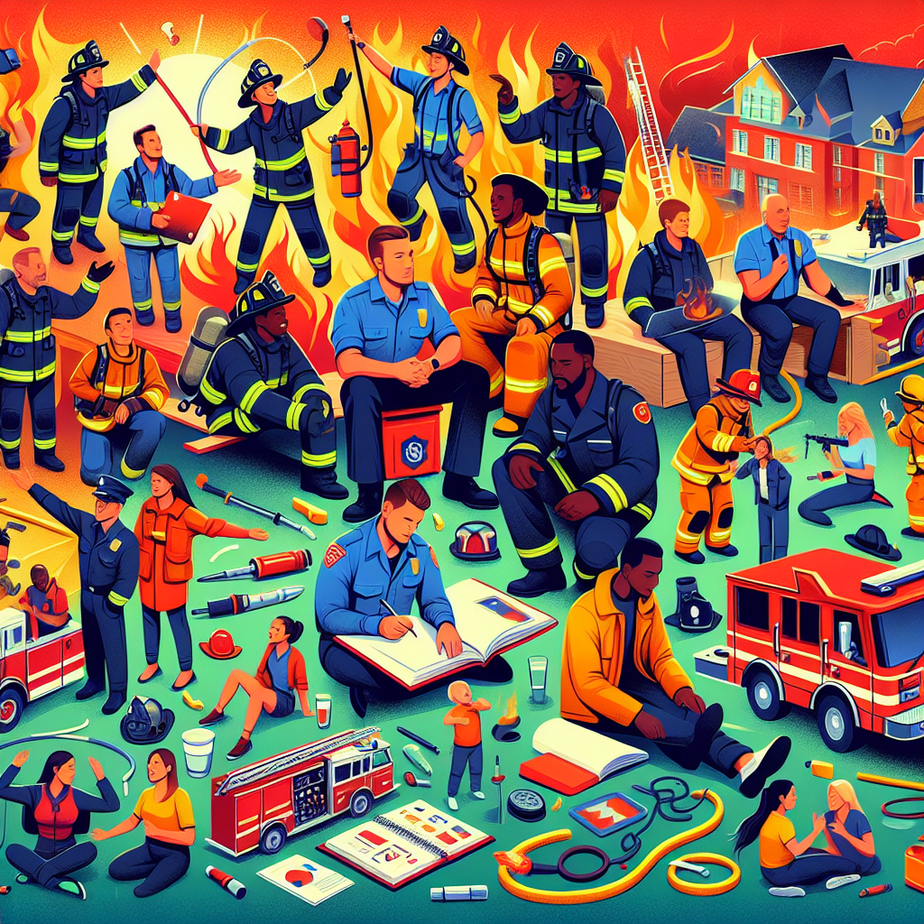🚒🔥Why Public Outreach in Fire Safety Matters 🚨
Picture this: It’s a sizzling hot summer afternoon in Australia. The gumtrees sway, cicadas buzz, and the air smells like dry grass and adventure. But in a split second, that adventure can turn into a dangerous reality—because fire doesn’t send a polite RSVP before it arrives. That’s where public outreach in fire safety plays a crucial role.
Firefighters don’t just fight flames; they also educate communities to prevent them in the first place. Without public awareness, everyday actions—like an uncle’s barbie going rogue or a forgotten candle left too close to the curtains—can spark chaos. So, how exactly does public outreach keep Australians fire-safe? Let’s break it down.
1. Teaching Fire Safety from a Young Age 🏫
Anyone who’s ever met a five-year-old knows they have the attention span of a goldfish. So how do firefighters ensure kids actually absorb fire safety? By making it fun!
👩🚒 Firefighter visits to schools – Kids get to see real firefighters in action, try on helmets, and even sit in a fire truck! More importantly, they learn how to Stay Low and Go in a fire and why it’s never a good idea to hide under the bed.
🔥 Stop, Drop, and Roll drills – Making kids roll around like sausages on the ground may look funny, but it teaches them a life-saving response if their clothes catch fire.
📖 Interactive storybooks – Who doesn’t love a good story? Firefighters use books filled with friendly firefighter mascots (like Blazer the Koala) to make fire safety memorable.
2. Busting Myths & Teaching Real-Life Fire Behavior 🕵️♂️
Australia is full of myths, from drop bears to “fire can’t travel across roads.” Spoiler alert: Yes, it absolutely can.
🏡 “My house is fireproof” Myth: No home is 100% fireproof. Those pretty gum trees in your yard? They can explode in extreme heat. Proper fire-smart landscaping (like keeping grass trimmed and gutters clear) makes a real difference.
💨 “I can outrun a bushfire” Myth: Unless you’re part-kangaroo, you’re better off sticking to an evacuation plan. Fires can move faster than a sprinting human, especially with strong winds pushing embers ahead.
🚗 “If I see a bushfire while driving, I’ll just turn around” Myth: Fires can change direction in seconds. Visibility drops, smoke thickens, and suddenly you’re trapped. Firefighter outreach teaches safe driving strategies in fire-prone areas, like knowing when to shelter in place vs. evacuate.
3. Fire Preparedness Plans: Because Hope is Not a Strategy 📝
Firefighters don’t just put out fires; they hand out practical survival plans. Because in a real emergency, your brain turns to scrambled eggs 🥚, and planning ahead is the only way to stay on top of things.
🏠 Home Fire Escape Plans – Every family should know two ways out of their home, a meeting point, and how to crawl through smoke. Bonus points if you can do it in the dark!
🗺️ Bushfire Survival Plans – If you live in a fire-risk area, you need to know:
- When to leave (Hint: before the fire gets close).
- Where to go (a safe location away from the fire zone).
- What to pack (essentials = documents, medications, pet food, and phone chargers).
📢 Communication Strategies – During emergencies, power and internet can fail. Firefighters encourage communities to have backup plans, like a battery-powered radio tuned to emergency stations. Old school? Maybe. Effective? Absolutely.
4. Community Fire Drills & Simulations: Practice Makes Perfect 🔥
Have you ever seen a fire evacuation in a shopping centre? Watching dozens of people walk out single file while someone in their pajamas still insists on finishing their coffee? That’s fire drill magic at work!
🏢 Community Fire Drills – Firefighters organize drills in workplaces, schools, and residential buildings to make sure people know what to do before the sirens start blaring.
🚁 Bushfire Simulations – Australia’s firefighting teams run full-blown bushfire response drills, complete with water-bombing aircraft, strike teams, and controlled burns. These exercises don’t just train firefighters—they help councils and residents understand exactly how quickly fires spread.
🚶♀️ Escape Route Testing – Firefighters visit areas prone to fire risk and work with communities to test if their escape routes are actually safe. Newsflash: A dirt road lined with dry bush isn’t a great getaway path.
5. The Power of Community Fire Awareness Days 🏕️
Aussies love a good gathering, whether it’s a sausage sizzle or a giant bingo night. Firefighters tap into this and host Fire Awareness Days that mix education with good old-fashioned fun.
🌭 Barbecues with a Fire Safety Twist: Who says learning can’t come with a snag in bread? Firefighters share grilling safety tips (like keeping the BBQ away from overhanging branches) while flipping sausages.
🎤 Q&As with Firefighters: Ever wanted to know what it’s like inside a smoke-filled house? Or how heavy a fire hose really is? These open forums give the public a chance to ask anything. No such thing as a silly question!
🎭 Fire Safety Skits & Demonstrations: Whether it’s showing the right way to use a fire extinguisher or putting out a (controlled) gas fire, seeing fire safety in action beats reading a dull manual.
🐾 Pet Fire Safety Booths: Because Fido needs a fire plan too! Firefighters provide pet safety tips, like how to prepare an emergency pet bag and never leaving doggos behind during evacuations.
Everyday Firefighters: Community Heroes in Boots 👢
Firefighters do more than fight flames—they’re teachers, mentors, and the friendly faces who remind us not to overload powerboards. Without public outreach, fire safety knowledge wouldn’t spread, and communities would be left unprepared for emergencies.
So next time you see a firefighter at a community event, ask them your burning questions 🔥. Chances are they’ll have a great story, priceless advice, and possibly a fire truck photo-op waiting for you. Who can resist that?
What’s the best fire safety tip you’ve ever learned? Share it in the comments and help the community stay fire-smart! 🚒💬



